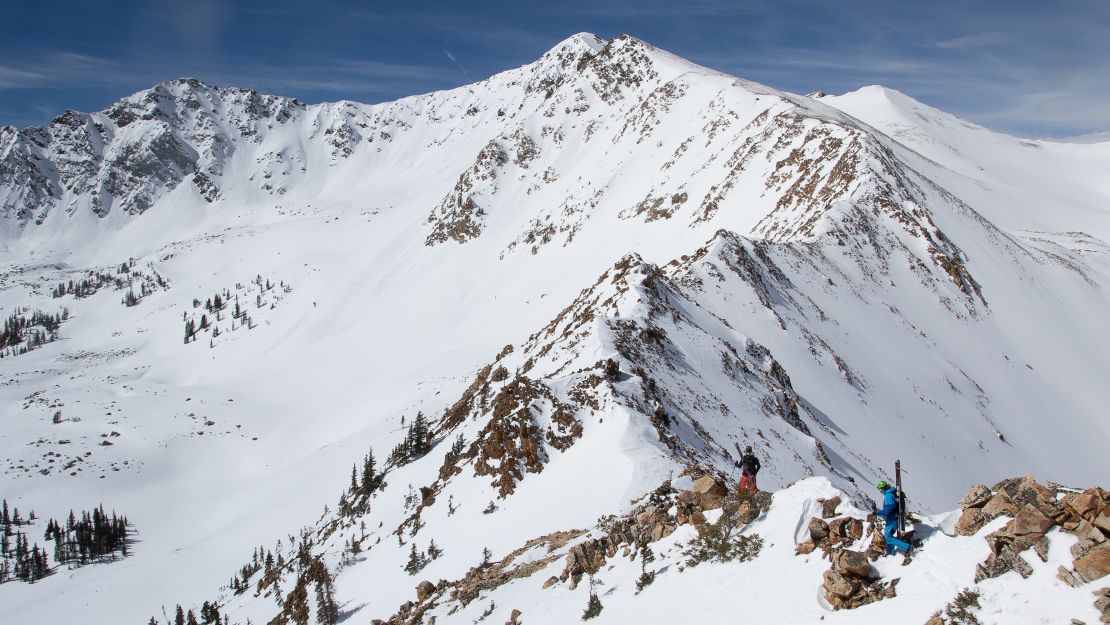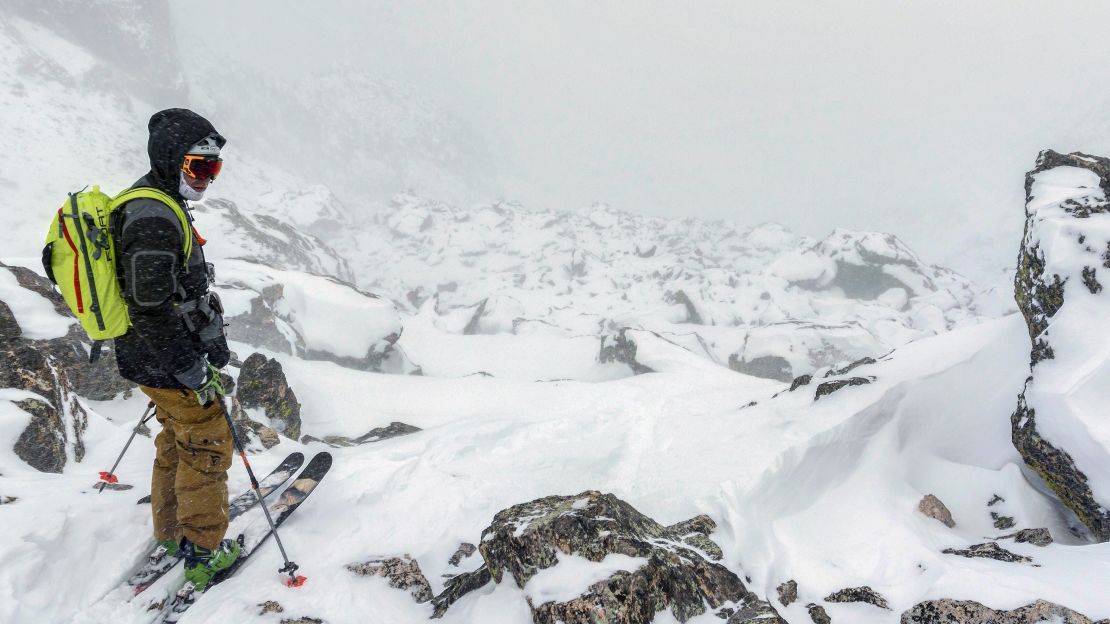Story highlights
Backcountry skiers aim to take on Rocky Mountain National Park's highest peaks
The pair have to climb up mountains as high as 14,000 feet before skiing down
When wintertime hits rugged Rocky Mountain National Park in Colorado, roads close and fair-weather hikers and campers go home.
But for a couple of adventurous backcountry skiers, the adrenaline-filled fun is just beginning.
A year and a half ago, skiers Austin Porzak and Dan Sohner set out to ski and photograph the 50 highest peaks in Rocky Mountain National Park, an adventure they describe as surreal and religious.
To be clear, we’re not talking resort skiing with convenient high-speed chairlifts zipping to the summits with long, groomed ski runs down.
Many of these peaks have never been skied before.
These adventure addicts are climbing peaks sometimes topping 14,000 feet with ice axes and ropes.
Expeditions that involve staying overnight on the slopes require them to carry 50-pound packs on their backs filled with food and tents in addition to climbing and avalanche safety equipment, skis, boots and camera gear.
You “must be 100% in the moment” because of all the unknowns and the constantly changing conditions, said Sohner, 28, who’s a professional photographer when he’s not tackling mountains.
Fear is essential to this risk-taking pursuit, Sohner said. “If you aren’t scared about something every single day, you’re probably not being safe.”
After reaching the summit, Sohner and Porzak strap on their skis and head down, making their own fresh paths through unpredictable terrain that often involves deep snow, ice and jagged rocks.
The climb up takes anywhere from 10 to 22 hours, and the ski down can be as fast as 30 minutes.
Colorado skiing: Insider Travel Guide

‘It’s going to be a challenge’
The project was born last year right after Porzak successfully completed another multiyear effort to climb and ski all 58 of the well-known Colorado “14ers” (peaks above 14,000 feet).
“After that, I swore to myself I would be done with the list kind of projects,” said Porzak, 34, who owns a property management company.
“About two weeks later, I found myself calling Dan and saying, ‘I’ve got it! Let’s climb and ski the 50 highest peaks in Rocky Mountain National Park,’ ” Porzak said. “It’s never been done, and it’s going to be a challenge.”
Indeed.
The peaks in the park are rarely skied because the terrain is just too rugged for most backcountry skiers to stomach, but Porzak and Sohner are halfway there, having skied 25 of the 50 highest peaks so far.
“We’re kind of out there on our own, and for as many safety tools as we carry with us, education and experience are the best tools,” said Sohner, a lifelong skier originally from Ohio who rode his bike out to Boulder three years ago and never went back.
Porzak, born and raised in Colorado with Rocky Mountain National Park as his backyard playground, is following in the footsteps of his mountaineering father.
His father, Glen Porzak, was a record breaker, too. Back in the 1970s, he was the first to climb the 100 highest peaks in the park and helped map its boundaries.
These two members of a new generation of mountaineers are sharing their journey every step of the way online at Ski RMNP, with hopes of inspiring others to embark on their own adventures.
National parks get star treatment in IMAX film

Inherent risks
This particular kind of journey isn’t without its perils.
Porzak’s scariest moment on this odyssey occurred as he was about to reach the summit of the highest and most dangerous peak in the park.
“At the very final pitch, we should have rappelled over it, but I just decided to jump off it with my skis. I landed with such great force, I triggered an avalanche.”
He got tossed around, falling more than 400 feet. Surprisingly unhurt, Porzak and skiing buddy and professional photographer John Dickey calmed down with some lunch, grateful to be out of the danger zone.
But as they slowly headed out again in a seemingly safe, flat area, Dickey hit a “snow bridge” masking a deep and unexpected hole.
He tumbled into the hole, breaking his leg. Porzak spent the next six hours getting his friend out of the hole and back to civilization for medical care.
Experience mitigates some of the inherent risks, and it’s particularly critical from October (when they start scouting for the season) until January or February due to the unpredictability of the new winter snowpack, the storms and the winds during that time.
The pair just recently stopped skiing for the season on July Fourth when high temperatures thinned the snowpack too much for safe skiing.
Both Porzak and Sohner are easygoing and out to enjoy life, but they’re serious when it comes to respecting nature and the park so that these will be passed on to future generations.
“Wilderness is inherited. We want to be able to help motivate other people who maybe didn’t have that same fortunate experience I had growing up having a parent who climbs and skis,” Porzak said.
Sohner echoes that wish to preserve the wilderness.
“We’re really exploring the themes of conservation and personal limitations and passing down the wilderness from generation to generation,” he said.
















